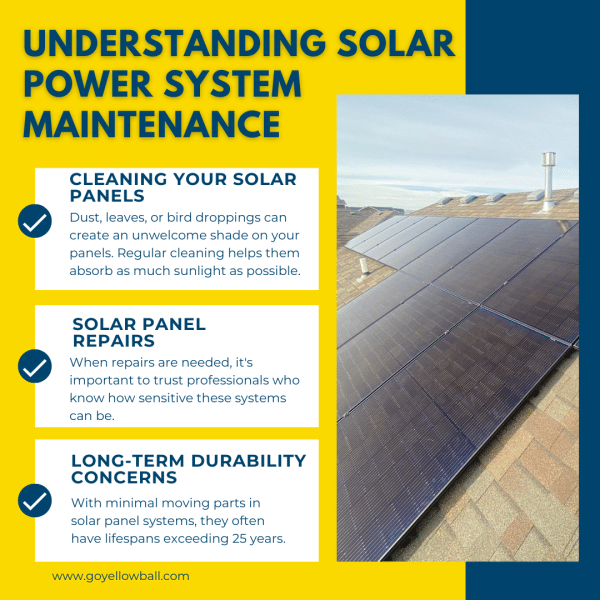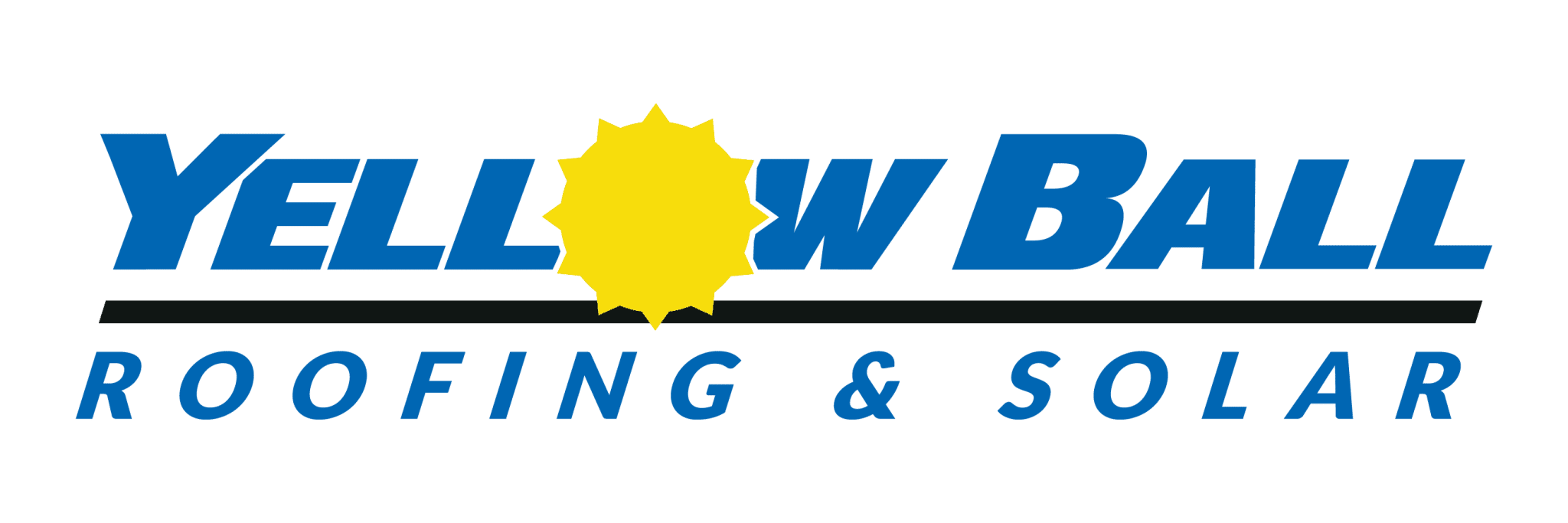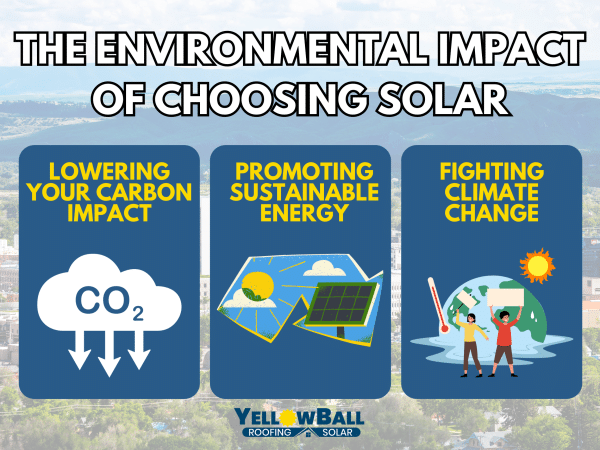Have you ever stared at your power bill and wondered, “Is solar worth it?” Imagine the sun as your energy powerhouse, not just that big ball of fire in the sky. That’s solar for you, turning rooftops into small-scale power plants.
Going solar is an investment; it’s like planting a seed that grows into savings over time.
Are you worried about high costs or periods when efficiency might drop? We’re here to help you address these concerns.
You’re probably asking yourself: “Is this worth it?” Stick around because we’re diving deep into those burning questions, and trust me.
By the end, you’ll see more than just daylight on why solar could be right for you.
Ready to make your home a model of sustainability and efficiency? Contact YellowBall Roofing & Solar today and take the first step towards a greener, more cost-effective future.
Table Of Contents:
- Assessing the Value of Solar Energy Investments
- The Environmental Impact of Choosing Solar
- Technological Advancements in Solar Power
- The Role of Location in Solar Energy Efficiency
- Understanding Solar Power System Maintenance
- Navigating Solar Incentives and Financial Programs
- Comparing Solar Energy to Traditional Energy Sources
- FAQs about Is Solar Worth it?
- Evaluating the Future of Solar Energy in 2024 and Beyond
Assessing the Value of Solar Energy Investments
When eyeing solar energy for your home or business, it’s wise to weigh the initial costs against long-term savings.
Investing in a solar power system might feel like a leap, but let’s break down what this can mean for your wallet.
The Initial Investment vs. Long-Term Savings
Sure, upfront costs of solar installations aren’t pocket change. We’re talking about quality equipment and skilled labor here.
But think of it as planting an apple tree; it takes time to grow, yet eventually provides fruit year after year.
Similarly, solar panels save you money on electricity bills from day one.
Over time, these savings can surpass your initial investment, sometimes even doubling depending on where you live and current electricity rates.
On average, households that switch to solar can expect a yearly reduction in their electricity bill of $1,200, resulting in the system paying for itself within 7-8 years.
Potential Increase in Property Value
Homes with solar panels can sell for higher prices than homes without them.
Research shows buyers are ready to pay extra for houses with sustainable technology like solar panel installations.
This means installing solar panels could be a smart financial move for monthly energy consumption savings and when it’s time to sell your home.
Tapping Into Incentives and Tax Breaks
Federal tax incentives sweeten the deal further. Tax credits and rebates are available, immediately reducing installation costs.
Across states, the specifics vary, but they all share one goal: making renewable energy accessible.
Thanks to programs that can cut the cost by thousands, now is a great time to start using solar energy.
Remember, you don’t have to figure this out by yourself.
YellowBall Roofing & Solar is here to guide you through every step.
We’ll help you understand the incentives, choose the best system for your needs, and ensure everything goes smoothly.
Key Takeaway: Solar energy isn’t just a buzzword; it’s a wise investment that pays off. Upfront costs are real, but the long-term savings on electric bills and property value hikes can double your money.
Don’t forget that tax credits and rebates make going solar more affordable. Need help? Companies like YellowBall Roofing & Solar have got your back to ease into clean energy without hassle.
The Environmental Impact of Choosing Solar
When you go solar with YellowBall Roofing & Solar, you’re not just cutting down on your energy bills.
You’re also joining a global movement about slashing carbon emissions and fostering a cleaner future.
Lowering Your Carbon Impact with Each Solar Panel
It’s no secret that traditional power plants belch out heaps of CO2. But did you know?
A typical residential solar panel system can eliminate three to four tons of carbon emissions yearly.
Yes, installing solar panels does come with initial costs. But they eventually pay for themselves by giving you clean energy directly from the sun.
This switch is a big step in fighting climate change because it means using less fossil fuels. It’s good for both your budget and the planet.
Promoting the Global Growth of Sustainable Energy
Choosing solar power does more than help you individually. It’s also part of a more significant movement promoting renewable energy development globally.
Each installation adds up, creating demand that drives innovation and economies of scale in sustainable tech industries.
This collective action has tangible effects: The cost of solar technology has plummeted by over 80% since 2010, making it more accessible than ever before.
Every solar panel installed on a roof shows that we’re moving in the right direction, weaving together a greener future for our planet.
Solar Energy: A Major Ally Against Climate Change
Solar energy isn’t just another power source; it plays an integral role in tackling global warming head-on.
Once installed, its ability to generate electricity without direct greenhouse gas emissions supports reducing our overall environmental impact.
Choosing YellowBall Roofing & Solar shows smart economic thinking and a commitment to improving the world.
Key Takeaway: Switching to solar with YellowBall isn’t just about saving money—it’s a decisive move against climate change. Every panel cuts CO2, boosts clean energy, and fuels the fight for our planet’s future.
By choosing solar, you’re shrinking your carbon footprint and driving down tech costs—making green energy a reality for more people daily.
Technological Advancements in Solar Power
Solar technology has advanced significantly, much like the evolution from bulky brick phones to modern, sleek smartphones.
Solar cells have become both more efficient and more affordable. This makes clean energy a more innovative option for people everywhere.
The Efficiency Evolution of Solar Panels
Previously, solar panels had limited success in transforming sunlight into electricity. But now? It’s a different story.
They’re so good that they can capture energy even on cloudy days.
With sophisticated designs, modern solar panels boast efficiency rates of over 20%.
That means more power and savings for your home or business.
We help customers by staying ahead of this curve at YellowBall Roofing & Solar. Our team only uses the best technology because we understand it makes a difference in your performance and cost savings.
Battery Storage Technology
Solar energy isn’t just for sunny days anymore.
Now, we have batteries that can store solar power for later use. It’s like saving sunlight to use when it’s not shining.
These storage systems let you keep using green energy even after sunset.
This is where things add up: stored power means you use less electricity from the grid, which can lead to lower electric bills.
Innovations Making Installation Easier
You might believe that installing panels is straightforward, but a lot is happening behind the scenes to ensure everything operates safely and efficiently.
The Role of Location in Solar Energy Efficiency
Location is an integral factor in making the most of solar energy, much like its importance when considering real estate.
Think about real estate: location is everything. The same goes for solar energy efficiency.
Sun Exposure and Climate Considerations
Your home’s geographical position can make or break your solar investment.
For instance, states like Arizona and California are famous for their abundant sunshine, making them ideal for solar installations.
But it’s not just about how many sunny days you get; the angle of sunlight hitting your panels matters.
The sun takes a lower path across the sky in regions with higher latitudes.
This means that rooftop solar panels might need to be tilted just right to catch the sun’s rays effectively.
At YellowBall Roofing & Solar, our hands-on experience installing systems has taught us how important it is to customize for each location.
Local Rates and Solar Savings
Depending on local electricity rates, you’ll feel different levels of impact on your wallet, which vary widely across states.
Going solar can lead to significant savings over time compared to traditional grid power in areas with sky-high utility costs.
To give you an idea without getting lost in numbers, residents in some states could see their investment pay off much quicker, thanks to high per-kilowatt-hour charges from their local utility companies.
The Big Picture: Latitude Meets Local Policies
Another layer lies the policy landscape beyond daily weather patterns and individual electric bills.
Specific areas offer more generous incentives than others, boosting the appeal of going green even further.
- Tax credits,
- solar renewable energy certificates (SRECs),
- and net metering policies
All work together as puzzle pieces that sweeten your deal.

Understanding Solar Power System Maintenance
Maintaining your solar power system is like caring for a lush garden.
Regular upkeep of your solar power system is essential to ensure peak performance year-round.
Cleaning Your Solar Panels
Dust, leaves, or bird droppings can create an unwelcome shade on your panels.
Regular cleaning helps them absorb as much sunlight as possible.
Grime and dirt can reduce your solar energy production by 35%, and cleaning your panels occasionally will help ensure your energy production keeps rising.
A soft brush and soapy water usually do the trick; you might want to avoid harsh chemicals that could damage the panels’ surface.
For snow removal in winter months—think gentle brooming rather than chipping away with sharp tools that could scratch.
Solar Panel Repairs
Solar systems may occasionally go wrong, like any other part of your home.
Maybe a branch falls during a storm, or something malfunctions internally within one of the panels.
When repairs are needed, it’s important to trust professionals who know how sensitive these systems can be.
They’re dealing with equipment that turns sunlight into electricity. If there’s an issue with your solar panels, the right team has the expertise and experience to quickly fix it.
They’ll do this without risking the system’s long-term durability.
Long-Term Durability Concerns
You’ve made an investment that’s supposed to last decades; with minimal moving parts in solar panel systems, they often have lifespans exceeding 25 years.
But staying ahead with regular check-ups from seasoned pros like us at YellowBall Roofing & Solar ensures this longevity isn’t cut short due to overlooked issues such as wiring problems or weather-induced wear-and-tear.
Bearing witness firsthand over countless installations gives us confidence when saying that a bit of attention goes a long way toward preserving what essentially becomes part of your home’s infrastructure, a renewable piece providing clean energy come rain or shine.
Navigating Solar Incentives and Financial Programs
Understanding the financial side of solar energy can be as critical as knowing how a panel turns sunlight into electricity.
Let’s talk about tax credits, rebates, and everything that makes solar panels worth more than just an eco-friendly choice but also a wise economic decision.
Tax Credits That Lighten the Load
The federal solar tax credit, or the Investment Tax Credit (ITC), can provide homeowners a 30% deduction on installing a solar energy system, though this rate will decrease after 2032.
Therefore, investing in YellowBall Roofing & Solar’s solutions could save you money when filing your taxes.
By investing in YellowBall Roofing & Solar’s solutions today, you could see significant savings on your next IRS visit.
Beyond federal incentives, states often shine with their perks.
For instance, some states give additional tax breaks or offer cashback for going green with panels.
To see what great deals are available in your area, tailored to local needs, a quick visit to DSIRE is like browsing through a catalog of financial benefits for solar energy.
Solar Renewable Energy Certificates (SRECs): Turning Rays Into Revenue
In SREC-enabled states, every megawatt-hour generated by your new system isn’t just lowering bills, it’s earning tradeable certificates.
You can sell these SRECs in markets similar to stock trading for extra income. Utilities purchase them to meet renewable portfolio standards.
Net Metering: A Money-Saving Option?
Net metering is a billing system that lets homeowners and businesses with solar panels earn credits for extra electricity they generate and send back to the grid.
This wise policy allows you to send extra power back to the grid. In return, you get credit on future electricity bills.
When your panels produce more power than you need during sunny times, they can power your home. This might also reduce costs even more when it gets cloudy.
Financing for Free: Smart Ways to Start Saving
Explore loans and leases explicitly created to lighten the financial load of sustainable upgrades. They pave the way for future savings.
You can pick from low-interest or pay-as-you-go plans with trusted providers. You’re investing in your property under brighter skies without immediate financial pressure.
Carefully considering all incentives and programs offered by federal and state governments and even utilities turns solar into an intelligent investment enveloped in environmental benefits.
Comparing Solar Energy to Traditional Energy Sources
Solar energy stands out in the modern quest for clean power, but how does it stack up against traditional sources like coal, natural gas, and nuclear?
We’ll peel back the layers of cost, reliability, and environmental impact that make solar a compelling choice.
Cost Comparison: Upfront Investment vs. Long-term Savings
The initial price tag of solar installations can give some homeowners pause.
Yet, solar power starts paying for itself when you look at its longevity and low operating costs.
Compare this to conventional energy, where ongoing expenses like fuel costs and grid maintenance are as sure as sunrise.
But many don’t realize that solar energy often turns out to be cheaper than fossil fuels over time.
Why? Once you’ve covered the upfront cost, the panels are yours, and sunlight doesn’t send a bill.
And with options like solar lease programs or power purchase agreements (PPAs), getting into solar is more accessible.
Reliability Matters: Sunlight vs. Supply Chains
Nuclear plants can run all day and aren’t affected by the weather. That’s a plus for traditional energy.
But remember, they also have risks like fuel supply issues or new regulations that could unexpectedly cut power.
Solar users enjoy an edge because their ‘fuel’ rises every morning without fail.
People often worry about cloudy days affecting their home’s power.
But thanks to better battery storage, homes can still run smoothly even when it’s not sunny.
The Green Advantage: Emissions & Impact on Climate Change
No conversation about energy would be complete without discussing climate change, and that’s where solar shines bright compared to its counterparts by offering near-zero emissions once installed.
- Solar reduces reliance on polluting resources, dramatically slashing greenhouse gas emissions, an essential step towards tackling global warming.
So, while there might be clouds passing overhead now and then, choosing YellowBall Roofing & Solar means investing in clear skies ahead.
FAQs about Is Solar Worth it?
Do you save money going solar?
Solar can slash electric bills, and with incentives, payback periods are shrinking. It’s a smart long-term investment.
What is the downside of getting solar panels?
The upfront cost stings and efficiency dips on cloudy days. Plus, not all roofs are ideal candidates.
Are solar systems worth the money?
Absolutely. They boost home value, cut utility costs, and benefit from various financial incentives.
How long does it take for solar panels to pay for themselves?
Typically, 5-10 years, depending on local sunlight levels and electricity rates—then it’s free power city.
Evaluating the Future of Solar Energy in 2024 and Beyond
So, is solar worth it? Absolutely!
The sun is always up there, dishing out free energy.
You’ve learned that harnessing this power can reduce your bills and improve your home’s value.
Think back to those incentives we mentioned. They’re like supercharged coupons for choosing solar panels.
Plus, going solar is gentle on the Earth, reducing carbon footprints with each sunny day.
Maintenance? It’s more of a checkup than an overhaul. New tech means these systems are getting more intelligent and challenging by the minute.
You’ve seen how location plays its part; some spots soak up more rays than others. But even in less sunny areas, those panels can still pack a punch.
Embrace a future where your home is not just a living space but a proof of sustainability.
Reach out to YellowBall Roofing & Solar for innovative solutions to make your home more energy-efficient.





